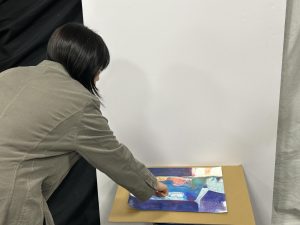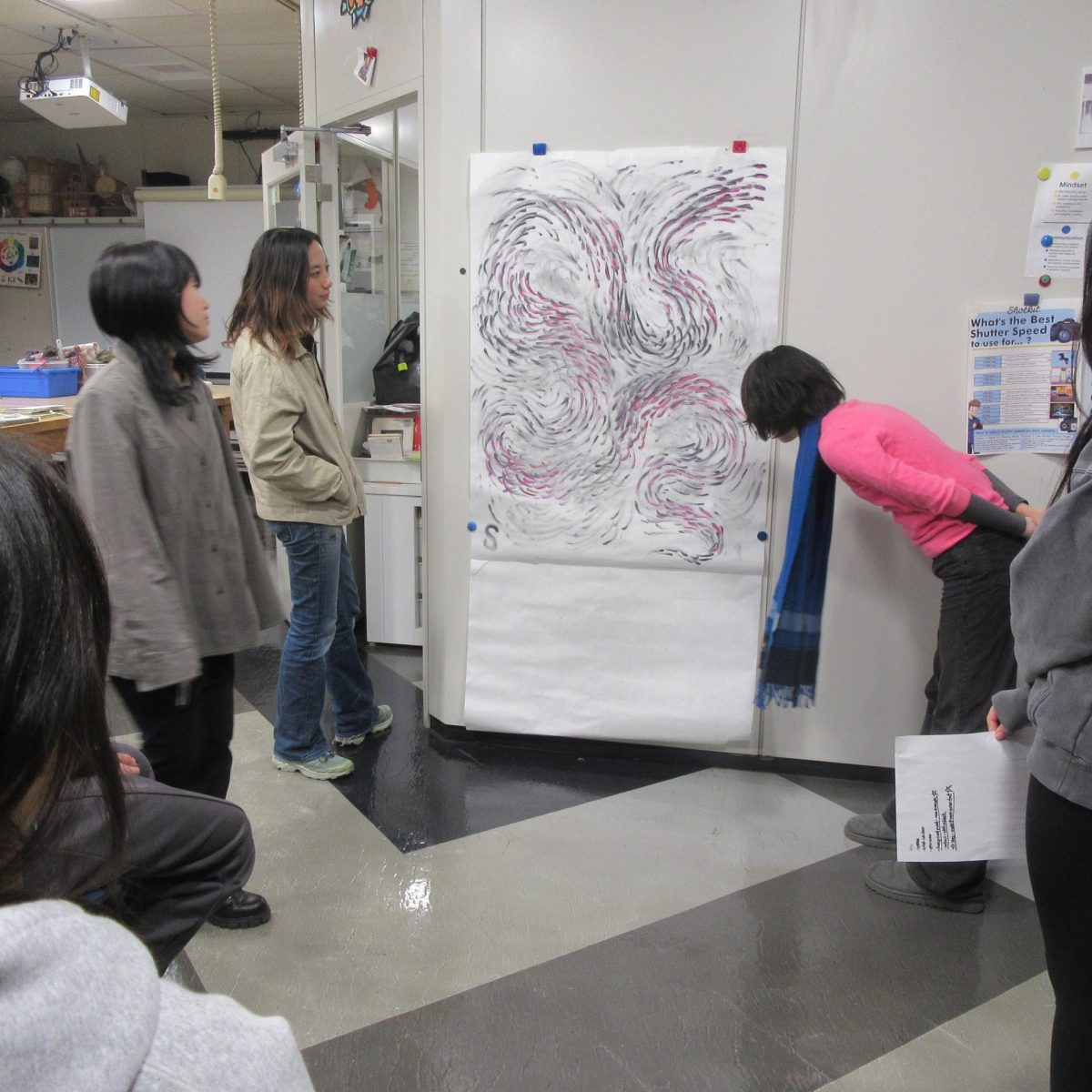The inherent subjectivity of art is not a particularly controversial concept; there is no single way to perceive either the visual form or the intended meaning of an artwork, as every viewer takes a unique point of view and set of experiences into their reading of art.
So, many artists have questioned, how is it that one can be assessed and graded on the quality of their work, especially when so much modern artwork is no longer rooted in realism? Unlike works from previous artistic eras such as the renaissance or neoclassical periods, modern art cannot be solely judged on the accuracy with which it portrays a subject or landscape (that is, if any art ever could).
Despite this commonly held belief that the perception of an artwork is undeniably personal to an artist and the individual viewer, a large population of ASIJ students, and students across the globe, subscribe to a system of standardized grading of art: the Advanced Placement exam.
As many students and faculty know, the AP grades each student on a scale of one to five—one being the lowest, three being a pass, and five being the highest. Every year, a handful of ASIJ students submit their artwork to be subject to the critique and scrutiny of an anonymous and randomly assigned examiner, and receive a single number grade in return.
Stances on whether we should be grading art and how to do so vary. In the opinion of Mr. Sarsfield, who teaches all the AP art classes at ASIJ, “artwork should be graded because it is an academic subject like any other.” Mr. Sarsfield grades art based on the evidence and quality of the process a student undertakes in order to achieve their final submitted piece. He believes that grading the process of an artwork’s creation is the most effective way to examine a student’s learning. “If you have a really strong process, you can’t help but make a positive outcome, and you’ll be able to do it repeatedly,” he said.
On the other hand, some students have expressed that their understanding of how an AP examiner will likely grade their final work has influenced them to the point of altering the way in which they approach their process. While ASIJ art teachers are clear on the guidelines in their grading of an artwork both amongst themselves and with their students, there is no guarantee that an AP examiner will take the same approach into their own judgment of a student’s art.
Niko Sano (’25), a current AP Drawing student (and former AP 2D student) says that in her sophomore year, she “thought about the AP so much that [she] lost [her] own sense of what art meant to [her].” Many AP artists at ASIJ find themselves altering the nature of their work in order to cater to the styles and subjects that the AP is known to favor when giving out its grades. By thinking about what others wanted from her art, she lost a sense of identity and ownership in her work. “I forgot to relish creating art,” Niko said.
Many believe that their art, in any form, allows for very raw and unfiltered self expression. Therefore, overly harsh criticism of their work may lead to a lack of the perceived emotional safety (or, at least, acceptance) that an artistic environment can often provide, diminishing individuality in the style, content, and media that an artist includes in their process and final piece.
On the other hand, art is considered by some to be separate from the artist behind it. An artist is to be acknowledged as their own being, untethered to the content of and themes included in their art. Ultimately, the only person able to decide what an artwork means to them is the person viewing it. This means that an artist must be willing to accept that their art may not be interpreted in the same way that they had originally intended, if they are to present their artwork to the public eye.

This is where art critique comes into play. At ASIJ, during an art critique, an artist’s peers are given the opportunity to observe and absorb artwork, leading to open discussion in which the piece is often analyzed in terms of the artist’s choices that are visible to the viewer: color, subject matter, texture, form, size, composition, and an endless array of other features that an art piece holds. Suggestions for alterations, next steps, new directions, and expansions of the project are offered by the viewers, interlaced with personal opinions and insights into how the individual interpreted what they are seeing.
“Critique is fundamental for building what is called the ‘inner voice’,” says Mr. Sarsfield.
The cohort of AP art students this academic year, in Mr. Sarsfield’s opinion, is notably strong in both their delivery and reception of critique. With his guidance, ASIJ’s AP art classes have become a place filled with hyper-supportive, meaningful discussion, with students consistently providing peers with in-depth insight and commentary, demonstrating their advanced visual thinking.
Critique is not always constructive, however, and Mr. Sarsfield acknowledges that the average student choosing to pursue art in further education will likely face unhelpful and perhaps even harmful criticism, taking the form of, as he puts it, “abrupt, direct, and dismissive” comments. While ASIJ students have developed a feeling of safety and even excitement in displaying their work to their classmates thanks to the nature of commentary that their peers often provide, students at art colleges will often find themselves being harshly criticized for their work, in the name of building ‘grit.’
Unfortunately, this type of criticism, though perhaps given with the intention of strengthening the student’s resolve and helping them to move past difficulty, can often completely undermine an artist’s sense of self. Many of those who study art consider it an “esoteric creative pursuit,” Mr Sarsfield says, and feel as though their work is an extension of themselves, and therefore a critique of their work may be taken to be a critique of their own self.
Niko says that she herself “loves” the process of critique at ASIJ, as it provides her with an array of perspectives on her work and provides insight into what others take away from pieces that she displays. In addition, the critiques not only benefit those who are receiving input on their work, but also those who are being forced to expand and exercise their creativity in order to accurately express their own perception of the work on display.
Despite the sometimes constraining nature of the AP art exams, ASIJ, with the support of Mr. Sarsfield and the arts faculty, has created a vibrant and supportive culture of critique in its art studios, and with it, a group of impressive students with strong inner voices and great potential for growth in their continued arts education.



Niko • Apr 24, 2024 at 5:33 PM
Sophia, thank you for giving me the opportunity to speak upon the AP Art programs at ASIJ. Your enthusiasm towards your work never stops to inspire me.